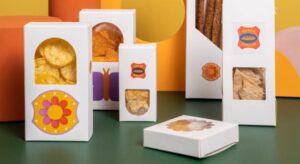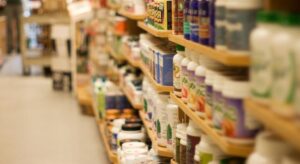
How to Blend Dry Ingredients? – Mixing Methods

If baking is your calling, knowing all the nitty-gritty of the matter carries immense importance. Baking is more of a science than just mere experimentation with ingredients. It is sensitive to chemical changes and therefore involves precision and accuracy while setting the ingredients. So, if you want to achieve the desired results, always ensure you are more controlled with your actions and know how to play with ingredients accurately.
Baking is quite literally, not a piece of cake!
If you wish to try different recipes, you must understand “the art of mixing”. You must know how to blend dry ingredients with wet ingredients, and the ideal temperature at which different baking items are to be put in the oven to get lip-smacking results every single time. Also, it is very important to correctly measure the quantities of the ingredients used. Try to be as particular as possible, the importance of a teaspoon and a tablespoon hold immense importance in the baking world.
So, if your favorite baking recipe instructs you to mix the dry ingredients like flour, baking soda, salt, and other dry ingredients and wet ingredients like milk, chocolate syrup, butter, and more in separate bowls before mixing batters, there is an important reason behind it. Always ensure to keep all the tools, and equipment handy like a whisker, set of measuring spoons, bowls, etc before starting with your baking session.
Why Do You Blend Dry Ingredients Separately and Wet Ingredients Separately?
If you as a baker have always wondered why mostly all the baking recipes put excessive strain on combining the dry and liquid ingredients in separate bowls, then it is simply to evenly distribute all the components of the dry ingredients.
Baking requires patience, it is a delicate process and hence you should take all the time in the world to perform every step thoroughly to get delicious delectable desserts!
Whether it is cookie dough, pancake batter, or any cake mix that you are preparing, the general rule of baking says, thoroughly mix all the dry ingredients together before pouring in the liquids. This is done to achieve an even batter, one with uniform consistency. Mixing the dry ingredients first ensures you are evenly distributing the raising agents, salt, flour, and other ingredients before adding them to the final liquid batter together in one bowl.
To get fluffier, soft, and delicate baking results, it is important to keep in mind that, “less is more”. That means once you combine both the mixtures separately, you will have to do very little mixing at the end for the final batter. The less you mix the batter, the less gluten has a chance to develop resulting in fluffier and delicate desserts just like it was intended.
Resist the urge to keep mixing the batter until all the lumps are dissolved. Lumps are okay, they will themselves dissolve during the resting period but if you over-mix, chances are the finished product will be of a hard texture which certainly cannot be enjoyed. Over-mixing the batter strengthen the gluten in the flour which yields tougher baked goods.
How To Blend Dry Ingredients with The Wet Mixture?

Once you are set and ready with all your wet ingredients, dry ingredients, baking recipe, and equipment, it is time for measuring and mixing. Measure and put the dry ingredients and wet ingredients in separate bowls and follow the steps below to learn the art of combining the ingredients.
Step 1: Combine all the Dry Ingredients
Once all the dry ingredients like flour, salt, etc are in the bowl, start stirring them together. Use a wooden spatula in a manner that pushes the dry ingredients against the sides of the bowl creating a well. Once that is achieved gently start pouring the wet ingredients into the well.
Step 2: Start Combining the Wet and Dry Ingredients Gently
Once both the ingredients are in the same bowl, start mixing both of them using a high-grade silicone spatula or the scraper using the folding method. Run the spatula around the bowl’s edges and the bottom in a manner that pulls the dry ingredients over the wet ingredients just like you are folding them together on top of one another.
Step 3: Mix ingredients until all the lumps are dissolved
Combine the batter carefully and gently using the folding method until no lumps are seen. Create a uniform consistency batter and stop right there. Don’t beat the batter to death! Once the consistency is achieved, the batter is all set to go in the oven after enjoying the resting period.
Mixing Methods to Understand How to Blend Dry Ingredients and Wet Ingredients Together

Once the ingredients are set in one bowl, the next challenge is to blend them together. But what does blending mean?
The general objective behind blending is:
- To uniformly distribute the components of the batter
- To see that there is a minimum loss of leavening agent as possible
- To prevent gluten from forming
- To get a uniform texture with minimum to no lumps
Mixing is a broad term that includes stirring the batter, blending, binding, whipping, and folding. There are many mixing methods and each of them gives a unique texture and character to the finished product. Also, the use of different equipment for mixing and blending creates a lot of differences. That means fingers, spoons, forks, whisks, blenders, food processors, etc will all yield different results and textures every single time.
Mixing Methods

The most common types of mixing methods involved in a baking session include:
- STIR: this is the simplest of all methods as it just involves mixing all the dry and wet ingredients together using the equipment of your choice usually done in a circular motion.
- BLEND: Blending is a technique where ingredients are mixed till they become absolutely uniform in nature.
- CREAM: Here, fat and sugar are beaten to a point where they convert and take on a light and airy texture.
- WHIPPING OR WHISKING: This technique usually requires the help of an electric mixer or a whisker. It is done to incorporate air into certain ingredients such as eggs and cream.
- FOLDING: It is done to create a little aeration usually using a large spatula. This technique involves the incorporation of one ingredient over another in a folding-like manner.
- BEAT: Beating is a rigorous form of blending the ingredients together usually done using an electric mixer. All the ingredients in the bowl are beaten vigorously in an up-and-down, back-and-forth motion until they fully become one.

In short, there are many methods of combining and blending ingredients together. Each method yields unique results and is used to bake different items. For example, to bake flourless cakes like cheesecakes or mousse cakes, just a little aeration is required and hence folding technique is commonly used. Ingredients are lightly stirred or mixed together so that minimal incorporation of air happens.
Does It Matter If You Add Dry Ingredients to Wet Or Vice Versa?
Yes. It does make a lot of difference.
The ideal thing to do is to always add the dry ingredients into the bowl of wet ingredients. This is done to avoid clumps and lumps in the batter. Adding the wet ingredients into the bowl of dry ingredients can make the entire process messy and cumbersome.
Also, if you add wet to dry, you are not just increasing your amount of labor but are hampering the final outcome. It will make combining the ingredients harder which means you will overbeat the mixture resulting in the formation of gluten in the flour. Gluten will yield tougher baked goods and really nobody wants that.
Frequently Asked Questions
What is the meaning of, ‘blending’ in baking?

When two or more ingredients are combined together in a way that they lose their individual properties and become smooth and uniform, it is known as blending. While baking cakes, when the dry ingredients and wet ingredients are mixed together, the final batter is a smooth, silky and uniform concoction of two different types of ingredients.
What are the most common mixing methods in baking?
The creaming method is usually considered the most common mixing method in baking. It is done to infuse air into the batter which helps it rise, become tender, and also helps in creating a stable and lump-free batter.
Can the baking ingredients be mixed in a blender?
You can try if you wish to, but there are high chances that you will over-mix the batter which results in over development of gluten and gluten tends to yield tougher or sometimes rubbery texture baked goods.
What do you use to combine ingredients in a bowl?
Mixing bowls are a staple in every professional baker’s kitchen, which is a large bowl used for mixing baking ingredients.
Can you mix dry ingredients together?
Baking is a science – whether you’re making pancakes, muffins or cookies, dry ingredients should be mixed together before mixing the wet ones for the best results.
Is it OK to mix dry ingredients ahead of time?
Yes, it is completely okay to mix dry ingredients well in advance. The leavening agents in the dry batter are only activated when you mix the batter with liquid ingredients.
What tool do you use to blend dry ingredients?
Cake mixing tools are essential for mixing flour, baking powder, essence, sugar, milk, eggs and more. Whisks should be every baker’s first pick – you can choose from stainless steel, plastic materials, and rubber whisks.
What is blending in baking?
During the baking process, there are two separate mixtures – dry ingredients and wet ingredients. Blending in baking refers to mixing (blending) them together.
Wrapping Up

Well, there is a common adage that says, baking is science while cooking is an art. To perfect this skill, one must possess a deep understanding of the ingredients, their proportions, and the temperatures at which they are baked. To know how to blend dry ingredients with wet, various mixing methods and techniques carry immense importance.
Baking isn’t as forgiving as cooking and therefore if you wish your baking yield to be a pure success, it is important to perform all the steps involved in baking patiently and religiously.
FAQ'S
Mixing bowls are a staple in every professional baker’s kitchen, which is a large bowl used for mixing baking ingredients.
Baking is a science – whether you’re making pancakes, muffins or cookies, dry ingredients should be mixed together before mixing the wet ones for the best results.
Yes, it is completely okay to mix dry ingredients well in advance. The leavening agents in the dry batter are only activated when you mix the batter with liquid ingredients.
Cake mixing tools are essential for mixing flour, baking powder, essence, sugar, milk, eggs and more. Whisks should be every baker’s first pick – you can choose from stainless steel, plastic materials, and rubber whisks.
During the baking process, there are two separate mixtures – dry ingredients and wet ingredients. Blending in baking refers to mixing (blending) them together.



